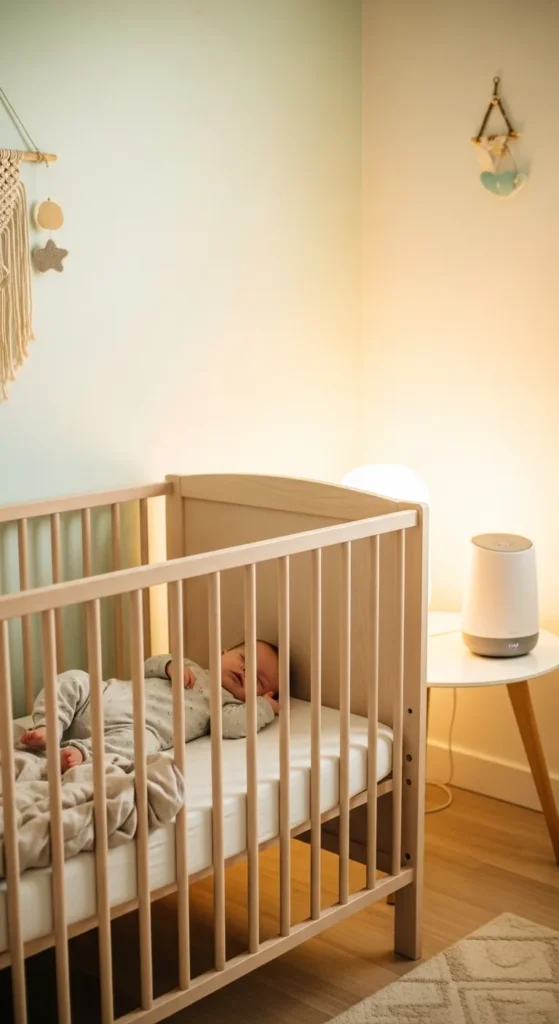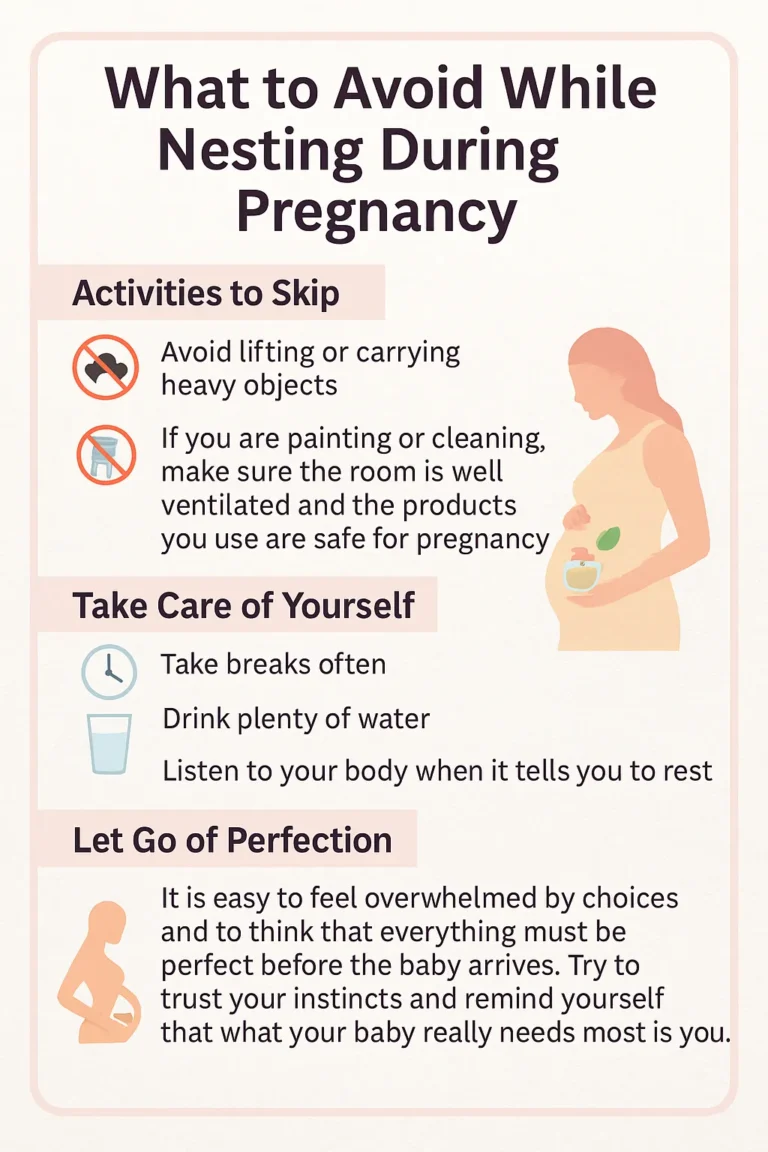35 Tricks to Get Baby to Sleep

Want your baby to sleep more quickly and for longer stretches?
The reality is, there is no single method that works for every baby. Newborns are especially challenging because their sleep patterns are unpredictable and they wake frequently to feed.
In those first few weeks, you might find your little one nodding off almost anywhere, often in your arms. By the time they reach around three weeks old, their sleep habits start to change and they need more help settling. It is strange to think a human is born not knowing how to fall asleep, but it’s true.
Some evenings, they may cry for hours, fight sleep with all their strength, or only want to rest on you.
Whatever your baby’s sleep struggles are, there are many simple things you can try to make it easier for them to settle and for you to get some much-needed rest too.
Related Posts:
1. Use white noise
A completely silent room is not always the best sleep cue for a baby. The womb was a noisy place, so you can recreate that comfort with white noise.

You can find free white noise tracks on YouTube, or try a white noise machine. Ewan the Dream Sheep is a popular choice because it offers a variety of sounds and a soft red glow that reminds babies of the light in the womb.
Some machines also project gentle light patterns onto the ceiling, which can be lovely for older babies.
Newborns, however, do not yet have strong eyesight, so the visual effect will matter less at this stage.
2. Feed baby to sleep
Some people might tell you this is a bad habit, but in the early months, it’s all about survival.
If feeding helps your baby drift off, it’s usually because they are hungry or want the comfort of being close to you.
If it works for you and your baby, go ahead and do it. You can think about self-soothing and sleeping through the night later on. Eventually, every child learns to fall asleep without being fed.
3. Try a bouncy walk
Hold your baby close against your chest, support their head, and walk gently on your tiptoes, adding a soft bounce to your steps.
Experiment with different rhythms to see which your baby prefers, keeping the movement steady and soothing.
4. Use a readymade swaddle
Wrapping a baby securely with a square blanket can be tricky, especially during nighttime changes. Ready-to-use swaddles make it so much easier.
Look for ones with a front zip for quick and simple access during late-night changes.
5. Reduce the light
Babies need a calm, low-stimulation environment to settle. Blackout blinds and dim lighting help signal that it’s time to sleep.
6. Avoid unnecessary nappy changes
If there’s been a messy accident, of course change them. But if the nappy is only wet, it’s often better to leave it during the night.
Modern nappies draw moisture away from the skin, keeping your baby comfortable until morning.
Do change them if they’ve done a poo, as leaving it for too long can lead to nappy rash.
7. There’s no such thing as too many cuddles
You cannot spoil a baby with too much love. If they want to be cuddled to sleep every night, go with it.
Over time, you might decide you want them to fall asleep in their own bed. If your baby is six months or older, you can start gently encouraging that change.
8. Get a cute dummy
Some dummies come with little soft toys attached, making them easier for your baby to find and hold. They come in lots of adorable designs, so you can choose one your baby loves.
9. Take a car ride
For many babies, nothing works faster than a short trip in the car. Often they’ll be asleep within minutes of starting the engine.
Just remember, babies should not sleep in a car seat for long periods. Once you arrive home, transfer them to your arms or a safe flat sleeping surface.
10. Try baby massage
A gentle massage can help your baby relax before bedtime. Use a small amount of baby oil or lotion, and lightly trace the letters “I L U” on their tummy and chest.
You can also softly rub their feet and toes. This works beautifully after bath time.
11. Keep the temperature comfortable
Just like adults, babies find it hard to sleep if they are too hot or cold. A room thermometer can help you decide how to dress them.
Light cotton layers and breathable blankets work best. Sleeping bags are also a great option and come in different tog ratings for the season.
12. Bounce your baby to sleep
Some babies are harder to settle during growth spurts or fussy phases. A baby bouncer can be a lifesaver, either with gentle foot bouncing or a vibration feature.
Only use it for short, supervised naps, and transfer your baby to their bed once they’re asleep.
19. Try a dream feed
Many parents say a dream feed helps their baby sleep for longer stretches. This is an extra feed you give at around 10pm, just before you go to bed yourself.
The trick is to lift your baby gently, offer the breast or bottle, and let them feed without fully waking. Once they’ve had enough, settle them back down and hopefully you can avoid a middle-of-the-night wake-up.
It doesn’t work for everyone, but it’s worth trying to see if it makes a difference for your baby.
20. Get a good night light
Turning on bright lights in the middle of the night can make it harder for your baby to fall back asleep.
A soft night light gives you enough light to see what you’re doing during feeds or changes without overstimulating your baby.
Choose one that gives a gentle glow so they stay relaxed and drowsy.
21. Skin-to-skin contact
If your baby is very unsettled in the evenings, skin-to-skin can be incredibly calming. Take off your baby’s clothes, leaving just a nappy, and hold them against your bare chest.
You can sit on the sofa or lie in bed, letting them hear your heartbeat and feel your warmth. This closeness helps regulate their breathing and heartbeat, and can quickly soothe them.
If you want to co-sleep after they drift off, follow safe sleep guidelines and never do this on a sofa.
22. Use a baby lounger
A baby lounger can help your little one feel safe and snug, similar to the comfort of the womb. These portable, cushioned nests are easy to move around the house so your baby can nap nearby while you go about your day.
They’re also handy to take along when visiting friends or family so your baby has a familiar, cozy spot to rest.
23. Create a relaxing bedtime routine
A calm, consistent bedtime routine can make a big difference in helping your baby wind down at night.
For newborns, it might not work instantly, especially during growth spurts, but starting early sets the stage for good sleep habits later.
Your routine could include a warm bath, a quiet story, and a soft lullaby. Over time, your baby will recognize these cues and begin to relax as soon as the routine starts, making bedtime smoother for everyone.
24. Pause before responding to every cry
Sometimes babies cry out or fuss while still asleep. If you rush in too quickly, you might wake them fully.
Give them a short moment to see if they settle on their own. This doesn’t mean leaving them to cry for long periods — just a brief pause to allow them to resettle.
Often, they will stop within seconds and drift back to sleep without needing to be picked up.
25. Do what works for you
Every baby is different, and every parent’s situation is unique. Whether you rock, cuddle, feed, or bounce your baby to sleep, the goal is to find what helps both of you rest.
The first year can be exhausting, so take comfort in knowing this stage won’t last forever. All babies eventually learn to sleep through the night in their own time.
26. Use a warm blanket for preheating the bed
Before putting your baby down, place a warm (not hot) blanket or heat pack on the mattress for a few minutes, then remove it before laying them down.
This helps make the bed feel cozy and reduces the shock of moving from your arms to a cool surface.
27. Gentle shushing

A steady “shh shh shh” sound close to your baby’s ear can be surprisingly calming. It mimics the noise they heard in the womb and can help them settle faster. Keep the sound rhythmic and soft.
28. Rock in different motions
Some babies prefer a side-to-side sway, while others like a gentle forward-back rocking. Try sitting in a rocking chair or standing and swaying to see which motion soothes your little one best.
29. Use a comfort scent
Babies are comforted by familiar smells. Sleep with your baby’s sheet or swaddle for a night so it picks up your scent, then use it in their cot. The familiar smell can help them feel safe and relaxed.
30. Keep the evening calm

In the hour before bedtime, keep lights dim, voices soft, and activities gentle. Too much noise or excitement can make it harder for your baby to wind down.
31. Offer a top-up feed before bed

Even if your baby has fed recently, a small top-up feed before starting the bedtime routine can help them sleep a little longer before the next wake-up.
32. Try soft background music
A gentle lullaby playlist or calming instrumental music can help mask household noise and create a relaxing atmosphere for sleep. Keep it low and steady so it doesn’t become stimulating.
33. Swaddle variations
If your baby doesn’t like a full swaddle, try swaddling just the arms or leaving one arm free. Some babies settle better when they can keep a hand near their face.
34. Offer a lovey for older babies
For babies over 12 months (to follow safe sleep guidelines), a small, soft comfort toy or blanket can be a great sleep cue. Make sure it’s lightweight and breathable.
35. Use the “pick up, put down” method
If your baby cries after being put down, pick them up for comfort until they’re calm, then try laying them down again. Repeat as needed so they feel supported while learning to fall asleep in their bed.






